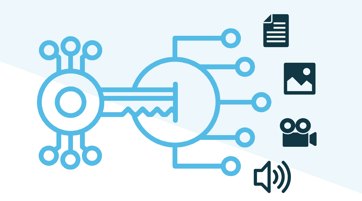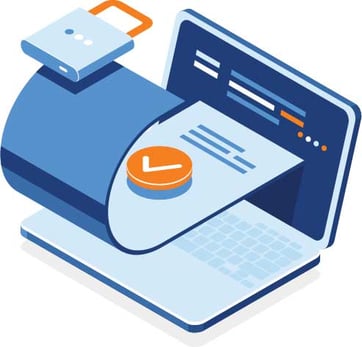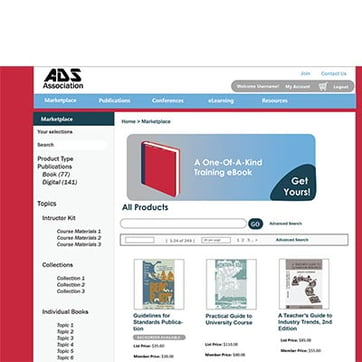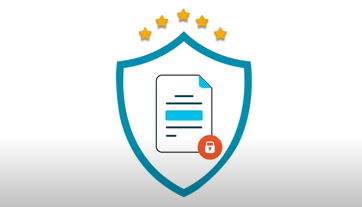DRM is the software that allows organizations to protect their digital content, such as documents, images, PDFs, videos, & audios.
DRM For Associations & Standards Organizations: An Essential Guide
It is crucial for Associations & Standard Development Organizations to keep the documents, certification guides, and training materials they create protected and exclusive to members. Standards documents, which serve as critical resources in various industries, must be safeguarded against unauthorized access, copying, and distribution. Digital Rights Management (DRM) software is the most effective solution to ensure the integrity and confidentiality of these important documents. This article explores how DRM can be utilized to secure standards documents and the benefits it provides.
Teams spend significant time researching, creating, editing, marketing, and selling guides and other types content. By not securing them with DRM software, resources go to waste and intellectual property, as well as the bottom line, are put at risk.
The Importance of Securing Standards Documents With DRM
Standards documents are vital for a myriad of different organizations, providing guidelines and protocols that ensure consistency and quality. These documents can encompass technical specifications, compliance standards, or best practices in various fields, including manufacturing, technology, and healthcare.
Securing these documents with DRM is essential for several reasons:
- Confidentiality: Standards documents often contain proprietary information or trade secrets that, if disclosed, could compromise competitive advantages.
- Integrity: Ensuring that documents are not altered or tampered with is crucial for maintaining their reliability and trustworthiness.
- Compliance: Many industries are subject to regulatory requirements that mandate the protection of sensitive information.
- Access Control: Organizations need to manage who can view or edit documents, ensuring that only authorized personnel can access critical information.
How DRM Software Can Secure Standards Documents
1. Access Control
DRM software allows organizations to set precise access controls on their standards documents. This can include:
- User Authentication: Only authorized users can access documents through unique credentials.
- Role-Based Access: Different levels of access can be assigned based on user roles, ensuring that sensitive information is only available to those who need it.
2. Usage & Access Restrictions
DRM solutions provide the ability to impose various restrictions on how documents can be used and accessed. These may include:
- Access Restriction: Limit who can access documents and when they can access by applying location restrictions, expiration dates, device limits, and other DRM settings.
- Copying and Printing: Organizations can prevent users from copying or printing documents, minimizing the risk of unauthorized distribution.
- Editing Permissions: Users can be granted view-only access or limited editing capabilities, preserving the document's original content.
3. Tracking and Auditing
DRM software typically includes tracking features that log every interaction with a document. This capability allows organizations to:
- Monitor Access: Keep track of who accessed a document, when, and what actions were taken.
- Audit Trails: Maintain records that can be reviewed to ensure compliance with internal policies and external regulations.
- Analyze Consumption: Understand how content is being consumed by users.
4. Expiration Controls
Organizations can set expiration dates on documents, automatically revoking access after a specified time. This is particularly useful for temporary projects or when documents become outdated, ensuring that only current information is accessible.
5. Encryption
DRM software often includes encryption features that protect documents from being read by unauthorized users. Even if a document is intercepted, it remains unreadable without the appropriate decryption key.
Implementing DRM for Associations & Standards Organizations
To effectively implement DRM for standards documents, organizations should follow these steps:
- Assess Needs: Identify the types of documents that require protection and determine the appropriate level of security.
- Choose the Right DRM Solution: Select a DRM software that meets the organization's specific requirements, taking into account factors such as ease of use, scalability, and compatibility with existing systems.
- Train Staff: Ensure that employees understand how to use the DRM system effectively, emphasizing the importance of document security.
- Regularly Review Security Policies: Periodically assess the effectiveness of DRM measures and update policies as necessary to address emerging threats.
How Can Vitrium Help?
Vitrium has over a decade of experience assisting Associations, Membership Organizations, and Standards Development Organizations protect their IP and easily distribute content. Our high quality DRM software enables countless organizations to keep control of their sensitive or confidential standards documents, determining who can access them, how, and when. With Vitrium DRM Software, standards documents, certification guides, training materials, and more, are kept exclusive to authorized users.
Vitrium enables organizations to apply a wide variety of different DRM controls that allows them to:
- Assign different permissions to different user types
- Prevent printing, copying, or sharing
- Set expiry dates and device limits
- Set open limits or account limits
- Apply user-identifying watermarks
- Restrict certain locations or IP addresses
Safeguarding standards documents with DRM software is not just a best practice—it’s a necessity. By implementing robust DRM solutions, organizations can protect their intellectual property, maintain compliance, and ensure that only authorized personnel have access to critical information. As industries continue to evolve and the demand for secure document handling grows, DRM will play a vital role in maintaining the integrity of standards documents.
If you’d like to learn more about how Vitrium can help your organization, please don’t hesitate to reach out to our team!





